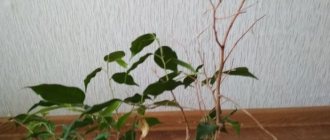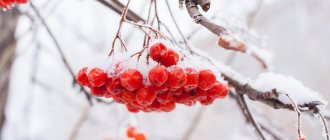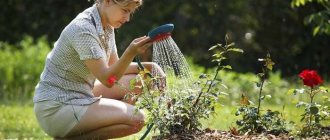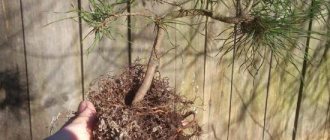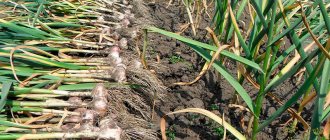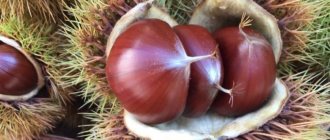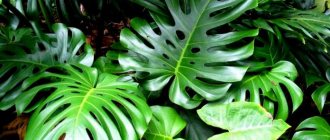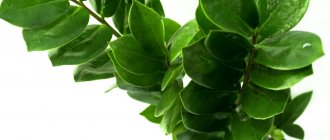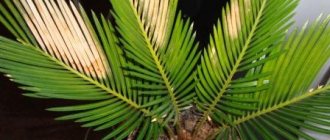Experienced gardeners share the best ways to use leaves.
Summer residents and gardeners often collect fallen leaves and burn them to clean the area. Our regular reader contacted the editor with the following question:
“I recently purchased a country house with a garden on the property. In the fall, the trees shed their leaves, which I burned in a homemade stove. I learned from a neighbor in the country that this natural material can be used more rationally. I would like to find out the opinion of experienced gardeners about whether it is worth removing leaves from the site. If so, what is the best thing to do with them?
We looked at the advice of experienced summer residents and gardeners, and prepared some of the best solutions for owners of country houses. After considering the possible options, you will draw conclusions about the advisability of harvesting the leaves and their further use.
Why you shouldn't remove leaves
Among summer residents there are those who advise removing leaves, and those who strongly recommend clearing the garden of litter. Therefore, it is better to consider the arguments in support of both solutions.
So, summer residents who do not remove leaves argue that in the wild no one removes litter. It accumulates on the soil surface for years, forming a nutrient layer for the proper development of trees. Flooring performs several functions:
- insulates and protects plant roots in winter;
- loose litter allows air to reach the roots, absorbs water well, gradually releasing it to the trees;
- during the period of snowmelt, the ground, which did not freeze in winter due to the flooring, absorbs moisture well;
- does not allow moisture to quickly evaporate from the soil, preventing the appearance of soil erosion and crust;
- Natural material, rotting, becomes a valuable fertilizer in which earthworms reproduce well.
If you leave litter on the ground, after a few years the soil will become dark, loose and wet. It will contain many nutrients necessary for the proper development of trees. This fertilizer contains nitrogen, potassium and phosphorus, as well as calcium and other useful microelements.
By leaving a layer of leaves on the ground in your garden, you increase the chances of having fertile soil that can give the trees everything they need to thrive.
Where to remove leaves from the garden
Supporters of eco-farming adhere to the theory that there is either no need to remove leaves from under apple trees, pear trees and other fruit trees, or they should be put into compost heaps. We will reject the first version immediately for the reasons already listed, but we will consider the second in more detail.
So, composting fallen leaves can be considered reasonable only if the trees in your garden are absolutely healthy and you have carried out all seasonal insecticide treatments in a timely manner. Are you sure that along with the leaves you are not adding fungal spores, insect eggs, or harmful bacteria to the compost heap? Then feel free to layer the foliage with earth or manure and leave it - in two years you will receive excellent fertilizer.
But if you are not sure about the health of your own garden, then there is no need to aggravate the situation and it is better to take all the collected leaves outside the site and burn them.
If there is a forest near your dacha, you can take the collected foliage there, but remember that this only applies to foliage - it is strictly forbidden to do this with garbage or household waste.
Why then do the leaves burn?
But not all gardeners leave foliage in their summer cottage. In most cases, litter needs to be removed, because it is not wild centuries-old trees that grow in the garden, but cultivated species. They can be quite capricious, reacting negatively to any unfavorable factors.
It's not just earthworms that live in fallen leaves. Some insect pests also do not mind spending the winter in this nutrient medium. These can be caterpillars and weevils, aphids and other species dangerous to plants. Among the dangerous diseases that affect natural materials are coccomycosis, powdery mildew, and scab. If the garden suffers from parasites and pathogens, the leaves must be burned. It is unacceptable to use them for any other purpose. Even after recycling, such material will lead to re-infestation of the garden.
If there are paths or lawns in the garden, litter should also be removed from them. Otherwise, the site will look neglected. Here the carpet of leaves looks untidy. On the lawn, litter blocks the plants' access to light and air. This will negatively affect the condition of the grass. In just a few days, the spectacular lawn takes on a yellowish tint, and bald spots appear in some areas.
Some gardeners even burn healthy leaves. But according to many summer residents, this is irrational. There are many ways to properly use healthy foliage to improve the appearance of your garden.
Cleaning leaves in autumn: opinion against
Supporters of the “natural cycle” reasonably object that leaves protect the roots of trees from frost and, when decomposing, improve the soil structure and composition. The head gardener of the Botanical Garden of Moscow State University "Apothecary Garden" Anton Dubenyuk warns particularly zealous gardeners that "if we do not want to live in a concrete desert, then we need to ensure that all our ecological companions, including soil flora and fauna, can survive."
Fallen leaves are not only an excellent fertilizer, but also food for earthworms, whose activity also improves the structure of the soil. In the fall, fallen leaves can be used to cover flower beds and beds with winter crops and plantings, and in the spring, partially rotted leaves are useful for creating warm beds for zucchini and pumpkins.
By and large, the question of what to do with foliage in your own garden can be decided at your personal discretion. A caring owner's garden will in any case receive the necessary support in the form of compost, humus, fertilizers, transport soil, regular watering and treatments that improve the soil structure. Autumn moisture-recharging watering will help trees survive the winter. Therefore, when deciding what to do with the leaves, you can proceed from considerations of your own convenience.
By the way, according to the Decree of the Moscow Government dated September 10, 2002 No. 743-PP “On approval of the rules for the creation, maintenance and protection of green spaces in the city of Moscow,” the collection of fallen leaves is carried out exclusively along city highways in a strip up to 25 meters wide; along the streets - up to 10 meters; along courtyard driveways and driveways in park areas - up to 5 meters, as well as in courtyard areas with artificial turf, including children's and sports grounds. Removing leaves from lawns is prohibited.
Making compost
If the leaves on the site are healthy, do not rush to burn them! They make excellent fertilizer. It needs to be cooked correctly. To do this, several compost pits are made on the site. You can store the harvested material in bags, boxes or other suitable containers. There are several different methods used to prepare compost:
- aerobic rapid fermentation;
- aerobic slow composting (higher quality composition);
- creating humus anaerobically.
If the leaves are diseased, they are burned. To be on the safe side, if the litter appears healthy, you need to treat it with bioinsecticides and biofungicides. For this, drugs like EM-1 are suitable. They will not only carry out antiseptic soil treatment, but will also contribute to the processing of organic matter into humus.
Leaf pits or containers should not be very large. But plants from the site must be added to them. These can be shoots of fruit and berry plants, tops without roots, etc.
How else to use
A healthy garden is a rarity. Most summer residents have trees and shrubs affected by diseases and pests. And leaves from such plants cannot be used as mulch. But it’s a shame to throw it away. So what to do? There are options here too.
Burn . This is an option for heavily infested foliage. You can’t take risks here, otherwise the infection will spread throughout the area. But after burning, you will receive the most valuable fertilizer - ash.
When it has cooled, sift it, pour it into glass jars and close with a nylon lid. In this form, the ash can be stored for years and will always be at your fingertips.
Put it in compost . If there were few pests and diseases in the summer, the leaves can be placed in a compost heap. But remember: their layer should be no more than 10 - 15 cm, and a thick layer of earth or peat (at least 30 cm) must be poured on top. Only in this case, in the spring of next year, fungal spores and pests will not be able to get out and will die.
Prepare soil for seedlings from them . Summer residents are accustomed to buying land in garden centers, but its quality has recently left much to be desired. So let's do it ourselves! But please note: the leaves of fruit trees are not suitable for these purposes; forest leaves are needed.
And the technology itself is simple. A small portion of fallen leaves is poured into a black plastic garbage bag. Then add a scoop of compost and pour in a little of any EM preparation (they come in different names, but the essence is similar - they contain photosynthetic and lactic acid bacteria, yeast, actinomycetes and fermentative fungi). After this, pour another portion of leaves, again a scoop of compost and a little EM preparation. And so on until the bag is full.
After this, you need to dilute 1 tbsp. spoon of any jam in a glass of water and pour into a bag with leaves - this is necessary so that the microorganisms in the EM preparation are active in cold weather. Now the bags need to be tied and left in the garden.
Aerobic composting
You will need to prepare a base from branches, poles, and shoots left over from spring pruning. This is a kind of drainage layer that can later be pryed up with a pitchfork, increasing the air flow to the rotting plant debris. This will significantly speed up the fermentation process.
A layer of young weeds is poured onto the prepared drainage. You need to lay out the prepared material on it. You can place lawn clippings or other light plant waste on top. The layer thickness should not exceed 20 cm. Earth is poured on top. It is watered with the selected EM preparation. You can fill several layers in the same sequence. After two months, the harvest can be transferred to the garden.
Carrion of apples, pears and plums
Fruits that have just fallen from a tree can make good jam, but they won't make much fertilizer. Firstly, carrion attracts wasps, which happily settle next to the free “canteen”, and which are oh so difficult to drive away. Secondly, in addition to the codling moth, the fruits certainly contain seeds that will sprout and provide you with a long-term fight against wild growth. Thirdly, the bones will also become a delicacy for rodents, which will gather on your site from all surrounding places and remain there after a satisfying winter. Finally, it is worth remembering that the first fruits to fall from a tree are those affected by pests or diseases, and by leaving them on the ground, you contribute to the spread of problems that can lead to the extinction of the orchard.
The correct solution would be to collect carrion and compost it in a pit protected from rodents, along with other plant debris.
Fast fermentation
If waiting two months is not possible, you can carry out a quick fermentation. It literally lasts three days. This method will allow you to quickly process fallen leaves. It is necessary to prepare a layer of drainage, leaves, grass, tops and other plant components. Soil is also poured on top.
Before treating with a bioinsecticide, the layer must be watered with hot water (temperature not lower than 85°C). The workpiece is left for 5-6 hours, and then EM-1 or another similar composition is added. The pile needs to be turned a little with a rake.
After 3 days, the unripe compost is once again treated with a solution and then transferred to the garden bed. The garden is dug up, leaving the workpiece in the ground. During September-October it will rot directly in the beds. In spring, such soil will be light and filled with nutrients. Using a rake, the soil is freed from a dense crust in order to begin the sowing campaign.
Reasons for harvesting leaves in autumn
Here are a few reasons why you have to remove fallen leaves:
- fallen leaves spoil the appearance of the area;
- leaves make it difficult to clean areas from dust and dirt;
- Disease carriers and various pests often breed in fallen leaves.
Despite the fact that many consider fallen leaves to be beautiful and even romantic, after the snow melts all the beauty will disappear, because the rotted mass of leaves looks quite unpleasant .
If a lawn or even a home garden is littered with such a mass, then there is no big problem in its ugly appearance.
The first spring grass will change the appearance of the soil, and the rotted mass will fill the soil with nutrients and improve its structure.
However, in public places, the presence of rotted deciduous matter poses a serious danger , because there is a high probability of slipping while walking, and a car can skid during any maneuver.
Once fallen on gravel or grass-covered areas, fallen leaves seriously complicate their cleaning. Fresh foliage scatters with a light blow of wind , so it is quite difficult to collect it in heaps for removal and subsequent disposal, and the rotted mass fills with water over the winter and turns into mush.
Loading such garbage into a dump truck is quite difficult, because the mass is not only heavy, but also spreads, which complicates not only its removal, but also cleaning the area.
A thick layer of fallen leaves is a good heat insulator , which is heated from below by the earth. Therefore, insects and microorganisms that carry wood diseases overwinter in comfortable conditions.
In addition, many of the pests calmly tolerate even severe frosts - in winter they freeze, turning into ice, and in the spring they come to life after thawing. With the onset of warm weather, these pests climb trees and settle in young foliage, damaging the tree and infecting it with various diseases.
Anaerobic composting
This method involves carrying out the rotting process in a specially prepared pit. A layer of weeds and tops is laid out at the bottom. Then autumn leaves are laid over. Between them you need to pour about 5 cm of soil. Each layer should be slightly damp. To do this, water them with a small amount of water.
After this, the layer is impregnated with EM-1. The access of oxygen to organic matter is closed, for which the layers are compacted tightly. The temperature in the pit should be +27…+29°C. If the temperature rises above 30°C, the contents are moistened with water.
The workpiece is covered with polyethylene and sprinkled with a layer of grass. The fermentation process takes from 4 to 6 months. Unripe compost can be added to the soil within a month. It will be more difficult to cultivate the land. The advantage of unripe harvesting is the preservation of many nutritional components. In such conditions, anaerobic microflora develops more actively. Organic residues lying deep in the soil are deprived of air access. Anaerobic bacteria will better process plant components into humus.
Manual mechanized devices
Manual mechanized equipment includes all garden vacuum cleaners and blowers that the worker puts on himself or moves along the ground using his physical strength. The basis of all devices of this type is a centrifugal fan that creates a powerful air flow .
To switch to vacuum cleaner mode, a suction pipe is connected to its input, and a filter bag that catches collected garden debris is connected to the output. To switch to blower mode, the fan inlet is covered with a protective mesh, and a blower pipe is connected to the outlet.
More detailed information about the operating principles and configuration of these devices can be found here.
All manual mechanized devices are divided according to the type of mechanization or type of engines into:
- electrical (AC);
- battery;
- gasoline.
Electrical devices
Electric vacuum cleaners and blowers operate on 220 V AC power and their power ranges from 0.6 to 3 kW.
This variation in power is caused by different purposes, because even a low-power blower can create sufficient air pressure to move a small volume of fresh leaves.
That is, with its help it will be possible to collect foliage in heaps or drive it onto a previously laid net or canvas. Powerful leaf blowers are great for cleaning gardens and vegetable gardens, because they can even blow away leaves that are stuck between the bushes.
At the same time, the weight of even the most powerful electrical devices does not exceed 6 kg, and their cost is 2–12 thousand rubles . The main disadvantage of electrical appliances is their dependence on an outlet , so they can only be used near electrified houses.
In this case, it is very important to choose the right extension cable, because with a power of 3 kW the operating current is 13.5 amperes, so the minimum cross-section of the cable core for a length of 50–100 m should be 2.5 mm2.
It is equally important to select the device itself correctly, focusing not only on power and weight, but also on the brand, which this article will help you with.
This is interesting: Rejuvenating pruning of an old apple tree - when and how best to rejuvenate a fruit tree
Rechargeable
These devices can work even far from a power outlet , but the battery charge rarely lasts more than 10 minutes in maximum power mode . This is due to the insufficient capacity of modern batteries, as well as their high price and heavy weight.
Therefore,
the total purchase costs are:
- blower;
- power source (battery);
- charger,
turn out to be many times higher than the cost of most electric or gasoline models .
Because of this, battery devices are purchased only for home use, because it is impossible to clean a street or large area with them.
And the purchase of several additional power sources will raise the cost so much that it will be cheaper to buy a self-propelled gasoline device. You can find more information on this type of garden vacuum cleaners and leaf blowers here.
Gasoline devices
The main difference between gasoline devices is their complete autonomy , because they receive energy for operation from the combustion of gasoline and are in no way tied to network electricity. Therefore, they are used where it is necessary to work for a long time in autonomous conditions, that is, without connecting to an outlet.
However, these devices have a significant drawback - it is impossible to install motors with a power exceeding 1.5 kW on them. This is due to the large mass of internal combustion engines and the ratio between:
- cylinder volume;
- motor power;
- weight of the motor.
Hand-held gasoline blowers are not subject to power restrictions for vacuum cleaners, because the motor can be carried behind the operator’s back, which is exactly how backpack devices are designed.
Therefore, they create a very strong air flow, because their power often exceeds 5 hp. With. However, it is impossible to use a backpack configuration for a vacuum cleaner due to the difficulties associated with emptying a filled filter bag.
This dependence also does not apply to wheeled non-self-propelled and self-propelled vehicles. After all, in them the entire load falls not on the operator, but on the wheeled chassis.
Therefore, even in non-self-propelled cars, motors with a power of 3.7 kW (5 hp) are often installed, and their weight reaches 40–50 kg. Self-propelled devices with 15–20 horsepower engines are even heavier. With. — their weight often exceeds 100 kg.
All wheeled devices are more efficient than hand-held ones , however they cannot be used in blower mode. Instead of a suction pipe, they have a suction bell, the width of which depends on the engine power and is 50–100 cm.
A flexible hose is designed for cleaning leaves where it is impossible to reach with a spout. It is connected to a special connector on the socket or housing of the centrifugal fan, after which it is used as a regular garden vacuum cleaner.
Self-propelled and non-self-propelled models are equipped with large garbage collection bags (volume 200–250 l), which are installed immediately behind the engine, between the vacuum cleaner body and the operator.
Soil for indoor flowers and seedlings
In addition to preparing a nutrient substrate for garden beds, the leaves can be used for other purposes. They can be used to make soil for seedlings or soil for indoor plants. Healthy leaves are compacted into a large plastic bag. Weeds without seeds and roots and tops are also placed here.
The bag needs to be pierced in several places. During the fermentation process, shake the contents periodically. It should be damp inside, but not too damp. The rotting process will take several months. When the plant components turn into a substrate, the mass is used for planting flowers and seedlings.
This soil is characterized by good looseness and low acidity (about 5-6 pH). This is an ideal material for growing begonias, cyclamen and other flowers with a delicate root system.
Making mulch
Fallen leaves make excellent mulch. To do this, the collection from non-fruit trees and shrubs is laid out on the beds. It is better to make compost from fruit tree litter. The advantage of this technique is that it prevents the growth of weeds. Minerals beneficial to plants will not be washed out of the soil during the rainy season. In spring, the mulch is either raked or incorporated into the soil.
Mown grass and trimmed branches
If a significant part of your plot is occupied by a lawn, you should not forget about it on the eve of winter. It is advisable to cut it to a height of 4-5 cm, so that the tall grass does not rot and dry out under a layer of snow, and in the spring it does not interfere with the emergence of fresh shoots. But it is not necessary to collect the grass after the last mowing and remove it from the site, unless, of course, you have always mowed the lawn in a timely manner and it has not overgrown. A few centimeters cut off will become natural fertilizer, and by spring there will be no trace left of them. In addition, grass can be used for winter mulching of tree trunks, flowers and shrubs that are afraid of frost.
Branches pruned from trees and bushes in the fall should be carefully examined: if they are affected by lichens, fungal diseases, or have visible cracks, burn them without hesitation. But if the pruning was purely decorative and the branches are healthy, they can be used in the spring to create warm beds. Autumn cleaning of plant residues in the garden and vegetable garden is necessary. Of course, fatigue from the past season and bad weather actively demotivate any summer resident, but this is the case when it is better to overcome your laziness than to start next spring with solving last year’s problems.
Warm beds
In the spring, the first shoots in the garden can be observed earlier if you cover them with dry fallen leaves in the fall. To do this, you need to first make trenches. The soil is left nearby throughout the winter. The prepared material is poured into the prepared recesses. Mown dry grass, tops and other plant debris are laid out on it.
The trenches need to be watered if the weather is dry outside. In spring, plant debris will settle. They need to be covered with soil left near the beds. The top of the planting area is covered with non-woven material. This will allow the soil to warm up faster.
Vegetable tops
When harvesting vegetables, we often remove all excess from them right in the garden. Leaves, stems, some roots and husks go into the ground and, as we think, rot there. Alas, in the warm season, the tops become not food for the beds, but an ideal shelter for pests. Slugs, caterpillars, female beet aphids and dozens of other insects will happily move into the warm house created for them. However, even if the tops remain free of pests, they will not be able to fully rot on the surface of the beds - and there will be no benefit from them.
All plant residues after harvesting vegetables must be stored in a compost heap. The optimal place for storing tops for the winter is a compost heap. Its correct formation and timely treatment with appropriate preparations will allow you to turn plant surplus into useful fertilizer.
Home decorations
From beautiful leaves of an original shape you can make beautiful bouquets and wreaths. They are used to create interesting crafts. This activity is fun to do with kids. You can decorate the compositions with other natural materials.
Also find out which fruit trees are best to plant in the fall and how to do it correctly. The material on winter storage of apples and life hacks from the portal’s craftsmen, thanks to which there are fresh tomatoes and even watermelon on the New Year’s table, are useful. In the video, a specialist talks about the nuances of autumn work in the garden.
Subscribe to our Telegram channelExclusive posts every week
Who is responsible for cleaning
Work on the maintenance of urban areas is organized by district governments, prefectures of administrative districts, balance holders, owners and tenants of land plots. Road services must remove leaves from roads and sidewalks. And cleaning of courtyards near residential buildings is most often carried out by specialists from the regional state budgetary institution “Zhilishchnik”. Private management companies must organize seasonal cleaning on their own.
Uncollected foliage is subject to a fine: for officials it ranges from five to 10 thousand rubles, and for legal entities - from 50 to 200 thousand rubles.
